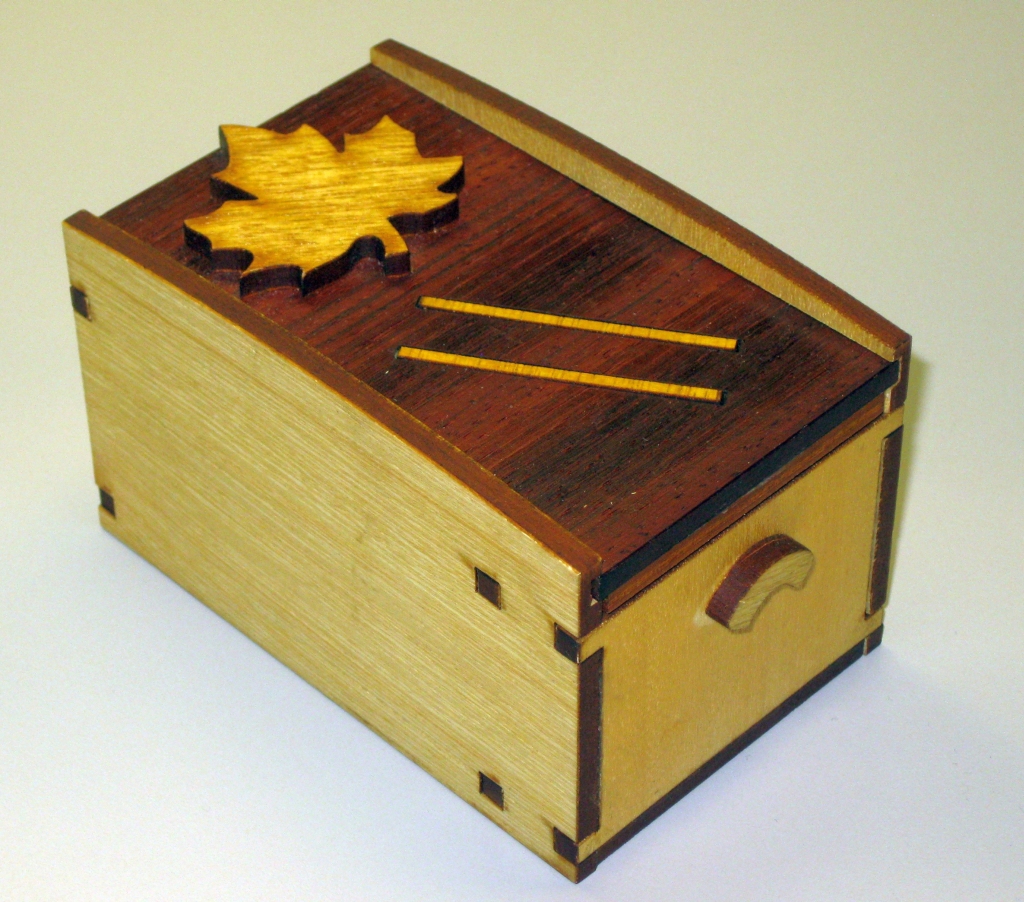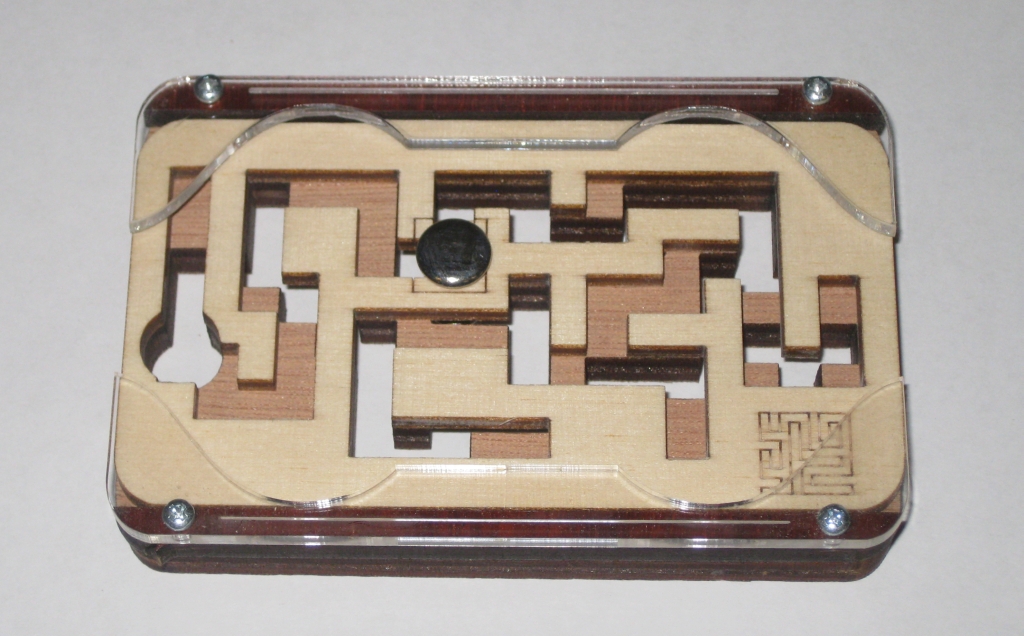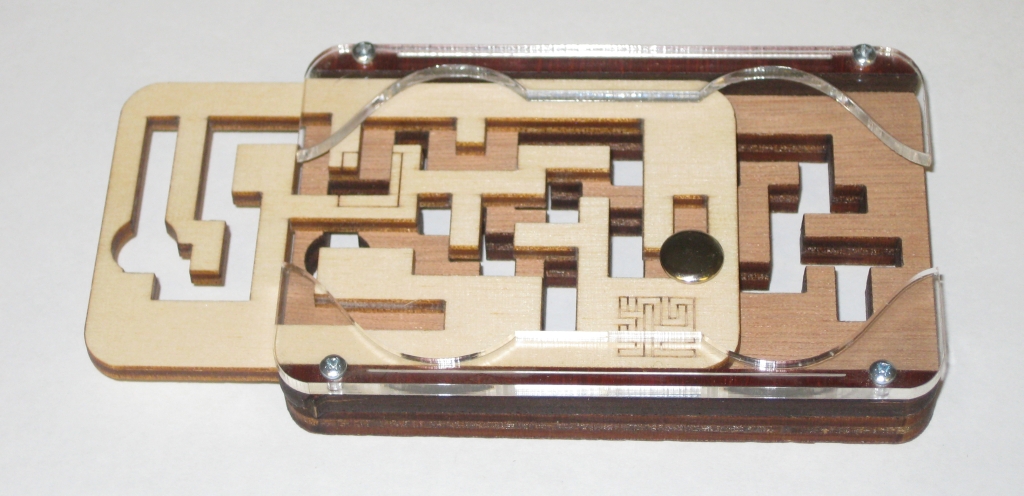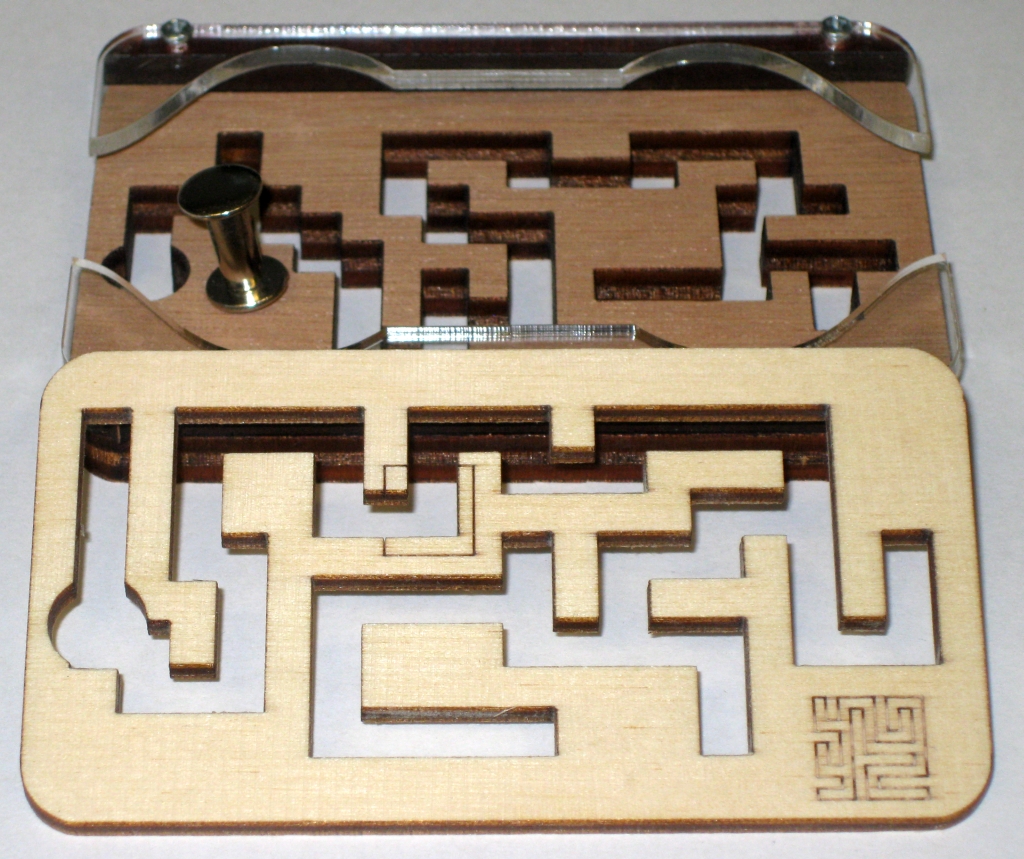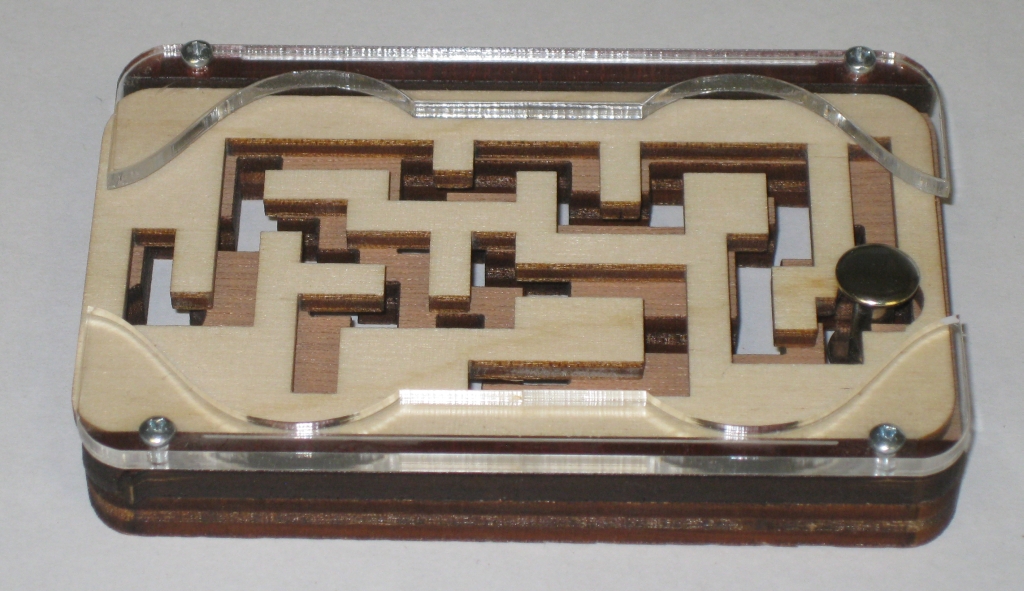I have been a fan of Jean Claude Constantin’s work for a while. Many of his designs are laser cut pieces which press together making for some very characteristic ‘Constantin’ looking designs and almost all of his puzzles have some unique and interesting mechanic that makes them worth owning. Radbox is another design which is a classic laser cut puzzle box design with some striking features which makes it really stand out. I got my copy from Puzzle Master.
As you can see from the image above, the design is quite striking. The Maple panels, Paduak top with Maple leaf and banded Maple insets really looks good. If you have any misconceptions that laser cut puzzles are ‘cheap’ or somehow ‘low quality’ then this box is a good example to prove that as a false statement. There are a lot of really nice design choices such as the gentle curve on the top of the side panels and the curved handles on the sides which don’t change the mechanism of the puzzle, but really help to finish the puzzle. At 4.5″ x 2.75″ x 2.5″, the box is a good size, and has very little reduction in inner dimensions so you’ll be able to store something around the size of two packs of playing cards inside.
Examining the box you’ll quickly see that at one end there is a peg attached to the sliding lid, and at the other you can see something curved at the other end, which all together stops the lid moving more than a new millimeters. Shaking the box, there’s a slight rattling, and spinning or blowing on it doesn’t seem to do much to move the lid any further. Some careful examination will lead to some discoveries about how the locking mechanism works, before making you realise that you may not have fully understood what’s going on as the box remains resolutely shut.
The mechanism is simple yet clever and once you understand how it works, you can open the box repeatedly and fairly quickly. Although it is similar to mechanisms I’ve seen in other boxes, it does take the idea one step further making it worth a look. Overall a fun box, and great value if you can get your hands on one.
